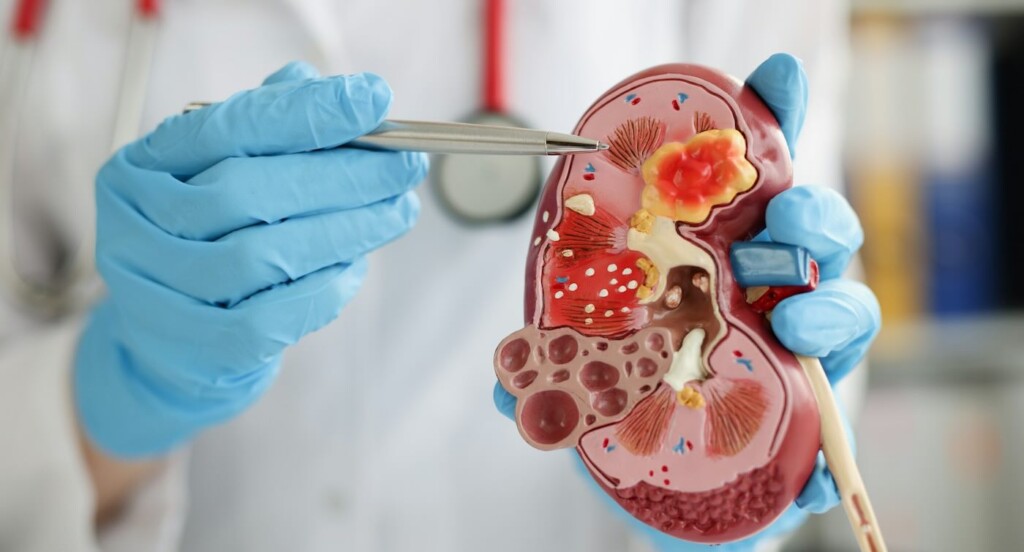

Researchers from the National Cancer Research Center in Spain (CNIO) discovered a mechanism that is triggered just a few minutes after acute liver damage – and this could cause treatments for those with serious liver problems.
Avenues for future treatment of liver damage include an enriched diet of amino acid glutamate.
“Glutamate supplementation can promote liver regeneration and benefit patients on recovery after hepatectomy or while waiting for a transplant,” wrote the authors In a published article in “nature”.
The liver is a vital organ, crucial for digestion, metabolism and the elimination of toxins. It has a unique ability to regenerate, which allows it to replace liver cells damaged by very toxins that these cells eliminate.
However, the liver ceases to regenerate in the event of diseases that involve chronic liver damage – such as cirrhosis – and these diseases are becoming more and more widespread, associated with poor eating habits or alcohol consumption. Activation of liver regeneration is therefore essential to treat the disease.
Learning to activate liver regeneration is therefore a priority today, to benefit patients with liver damage and those who have cut their liver to eliminate a tumor.
Research discovered in animal models this hepatic regeneration mechanism before unknown. It is a process that is triggered very quickly, just a few minutes after acute liver damage occurs, the amino acid glutamate playing a key role.
“Our results describe a fundamental and universal mechanism that allows the liver to regenerate after sharp damage,” said Nabil Djouder, head of CNIO growth factors, Nutrients and Cancer Group and the main study of the study.
Another breakthrough: Edible carbon balls can reduce cirrhosis from a liver disease to restaurant the intestinal microbiome
A “complex and ingenious” perspective on the regeneration of the liver
Hepatic regeneration was known to occur by the proliferation of liver cells, called hepatocytes. However, the molecular mechanisms involved were not fully understood. This current discovery is very new, because it describes communication between two different organs, the liver and the bone marrow, involving the immune system, According to a Cino press release.
The results show that the liver and bone marrow are interconnected by glutamate. After acute liver lesions, liver cells, called hepatocytes, produce glutamate and send it to the blood circulation; Through the blood, glutamate reaches the bone marrow, inside the bones, where it activates monocytes, a type of cell in the immune system. Monocytes then move to the liver and become macrophages – also immune cells. The presence of glutamate reprogram the metabolism of macrophages, and these therefore begin to secrete a growth factor which leads to an increase in the production of hepatocytes.
In other words, a quick event chain allows glutamate to trigger liver regeneration in a few minutes, by changes in the metabolism of macrophages. This is, says Djerder, “a new, complex and ingenious perspective on how the liver stimulates its own regeneration.”
Research also clarifies an unanswered question: how the different fields of the liver are coordinated during regeneration. In the liver, there are different types of hepatocytes, organized in different areas; The hepatocytes in each area perform specific metabolic functions. The study reveals that hepatocytes producing a protein known as glutamine synthetase, which regulates glutamate levels, play a key role in regeneration.
More progress: Destroying sound processing of tumors coming to a hospital near you for liver cancer
According to the CNIO group, when synthetase glutamine is inhibited, there is more glutamate in circulation, which accelerates hepatic regeneration. This is what happens when the liver undergoes acute damage: the activity of synthase glutamine decreases, blood glutamate increases, and from there, connection with the bone marrow is established, reprogramming macrophages and stimulating the proliferation of hepatocytes.
Possible therapeutic applications
The experiments were carried out in mice, but the results were tested with bioinformatics tools, using databases of mouse and human hepatocytes.
According to Djouder, “Food glutamate supplementation Can simply be recommended in the future after extirpation of the liver, and also to reduce the liver damage caused by cirrhosis. »»
Caffeine alert:: Coffee is now linked to reducing the risk of many conditions, including liver disease, parkinson, melanoma, or even suicide
The first author of the article, the CNIO researcher, María del Mar Rigual, also wants future research to explore by using glutamate supplements in humans who have undergone liver resection for the elimination of tumors.
Distribute the good news with patients around the world on social networks …






